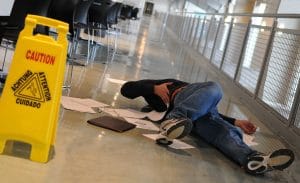New Clinical Study Examines the Circumstances around Falls and Spinal Cord Injuries
 Spinal injuries can be debilitating, and injuries to the spinal cord can be life-altering. Victims can suffer paralysis. Many patients suffer herniated discs and nerve damage that can be quite excruciating. Spinal injuries can prevent patients from working and severely affect their everyday ability to function and enjoy life.
Spinal injuries can be debilitating, and injuries to the spinal cord can be life-altering. Victims can suffer paralysis. Many patients suffer herniated discs and nerve damage that can be quite excruciating. Spinal injuries can prevent patients from working and severely affect their everyday ability to function and enjoy life.
The Journal of Spinal Cord Medicine conducted a study between 2005 and 2014 to determine the root cause of falls that led to spinal cord injuries. The study examined more than 6,400 people who had a traumatic spinal cord injury (SCI). Out of those individuals, 1,877 suffered their SCI due to a fall.
The study reviewed different organizational standards for analyzing falls, such as the World Health Organization’s system, which categorizes falls based on a one-meter cutoff. Other studies went so far as to examine energy absorption, the angle of the fall, and other factors.
The study results
The most common types of falls that induced a spinal cord injury were due to the following causes:
- 20% of the falls were caused by slipping, tripping, and stumbling
- 16% were falls from buildings
- 16% were falls from stairs and steps
- 9% were falls from ladders
Per their research, “People who were 61 years of age and older had the highest frequency of falls on the same level, while those aged 16–45 years had a higher percentage of falls from buildings, usually work-related.” Falls from heights tended to cause thoracic injuries and “complete injuries.” Falls from the same level or low levels were more likely to cause cervical injuries and motor function injuries.
The study also found that most “fall-induced SCIs occurred at home in women and among the elderly.” Saturdays and Mondays were the worst for falls, and July and November were the worst months.
Fall prevention
The people who conducted the study hope that the results can help provide strategies for reducing the risk of falls and the risk of a fall-induced SCI. The study examined different fall prevention programs, including a 2010 compendium of programs developed by the Centers for Disease Control and Prevention. Example prevention strategies include:
- Focusing on home safety.
- Improving the environment where old people live to remove clutter and loose carpets and fix uneven floors.
- Good lighting and hand rails in and near the bathroom and the bed to reduce in-home falls.
- Safety inspections and safety training for reducing on-the-job falls.
Victims of falls can hold others liable for their injuries if someone else was negligent, or caused their falls in some way. The Charlotte injury lawyers at Warren & Kallianos, PLLC are ready to advocate for injury victims across North Carolina. We file personal injury claims and workers’ compensation claims. For a free consultation, call 704-377-7777, or contact us today by completing our online form.

At Warren & Kallianos, we believe in the importance of working directly with our attorneys, Jeff Warren and Chris Kallianos. When you work with our firm, Jeff and Chris are always accessible to you throughout the progress of your case.
Read more about Warren & Kallianos, PLLC
